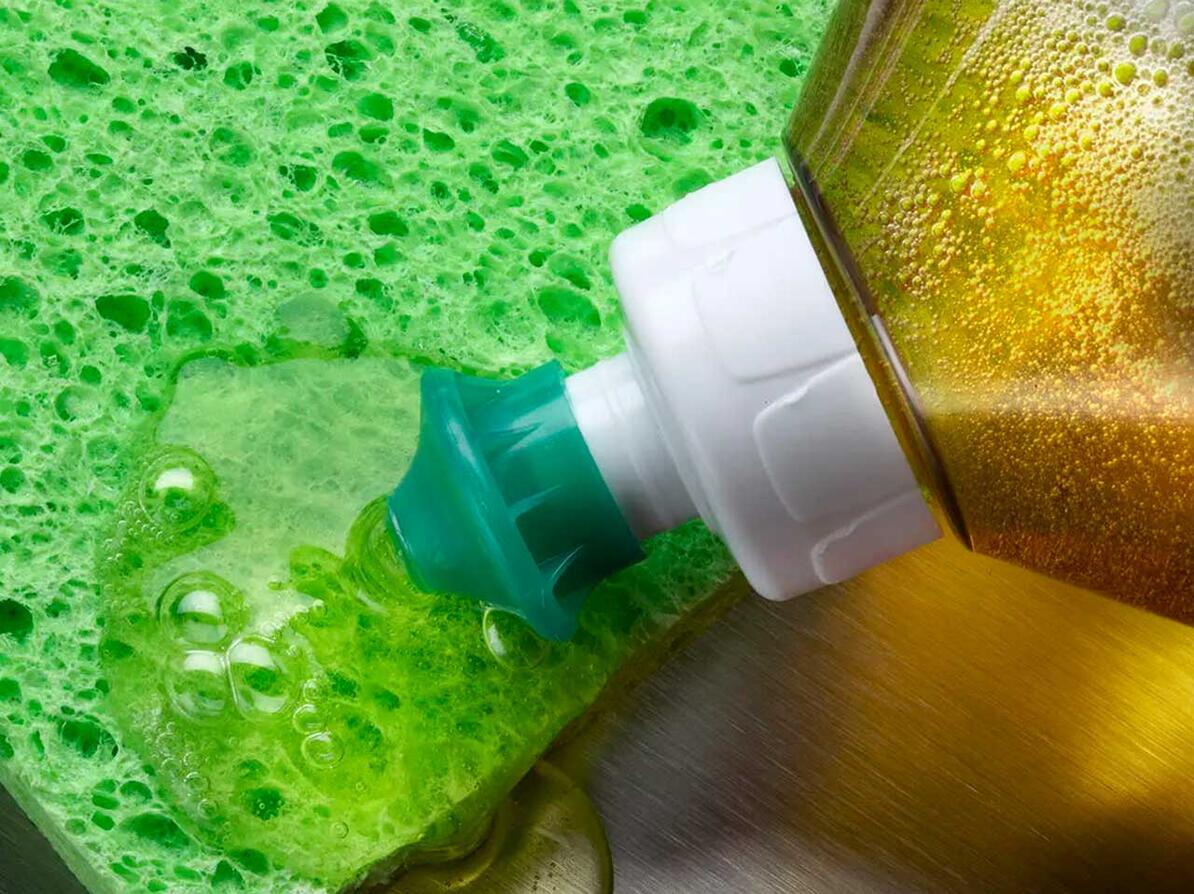Avoid these substances in dishwashing liquids
Five of 29 dish soaps contain allergenic substances or suspected endocrine disrupters. See which substances were found.

When cleaning casseroles, plates and pans by hand, it is almost impossible to avoid getting dishwashing liquid on the skin.
Therefore, it is a good idea to avoid problematic substances in dishwashing liquids.
10 dishwashing liquids are without unwanted chemicals
In our test of dishwashing liquids, you can easily find good options without unwanted chemicals.
No less than 10 of all 29 tested dishwashing liquids receive the best rating, A.
Generally, you can go after the Ecolabels in combination with an Allergy labels if you want to consider your health and the environment.
Most dishwashing liquids contain perfume
The test also shows that perfume has been added to most dishwashing liquids. No less than 18 of 29 liquid dishwashing soaps for hand washing contain perfume, which can cause allergies.
It is a good idea to limit your exposure to perfume in order to lower the risk of developing skin allergies.
Further, perfume does not affect the efficiency of your dishwashing liquid. The sole purpose of the added perfume is scent.
These dish soaps contain problematic substances
Five of 29 dishwashing liquids receive the lowest chemical rating, C.
Four of them contain the allergenic preservatives benzisothiazolinone and methylisothiazolinone.
Two dishwashing liquids contain the suspected endocrine disrupters BHT and Benzophenone-4.
Products that received the C-rating:
- Fairy P&G Platinum
- Fairy P&G Ultra Original
- Vel Pure & clear
- Vel Ultra Hygiejne
- Yope Natural washing-up liquid Bergamot
In Denmark: Scan your dishwashing soaps with the app Kemiluppen
Do you want to check if your laundry or cleaning products contain unwanted chemicals?
Download the app Kemiluppen and scan the barcode on your cleaning supplies to find out right away.
About the test
-
The Danish Consumer Council THINK Chemicals selected 29 widely used dishwashing liquids from the Danish market. We have contacted the relevant companies to check that the products are still readily available on the market.
We obtained the ingredient lists from the label on the products and from the manufacturers' websites. We then checked whether the ingredients could be problematic for your health and the environment.
This is a declaration test. Therefore, no chemical analyses was performed.
-
This is how the 29 hand dishwashing liquids are distributed:
- 10 dishwashing liquids receive the best rating, the A-rating.
- 14 dishwashing liquids get a medium rating, the B-rating, due to the content of perfume or plant extracts that can cause allergies.
- 5 dishwashing detergent get the lowest rating, the C-rating, due to the content of unwanted chemicals.
The chemicals that result in the C-ratings are:
- Benzisothiazolinone - 3 products (allergenic preservative)
- Methylisothiazolinone - 1 product (allergenic preservative)
- BHT - 1 product (suspected endocrine disrupter)
- Benzophenone-4 - 1 product (suspected endocrine disrupter)
Compared to our previous declaration tests, the prevalence of isothiazolinones has generally fallen:
- 2016 test - isothiazolinones in 12 of 33 products.
- 2019 test - isothiazolinones in 10 of 65 products.
- 2022 test - isothiazolinones in 1 of 19 products.
- 2023 test – isothiazolinones in 3 of 29 products.
What the companies say
-
Colgate Palmolive, the company behind Vel, informs us that BHT is an antioxidant which is added to a raw material and that it is only contained in small quantities (ppb).
BHT is declared on the packaging but not on the online list of ingredients. Vel informs us that they have assessed that the quantities are low. Therefore, they do not declare the substance on the data sheet, only on the packaging, as it is a requirement from Asthma-Allergy Danmark.
The Danish Consumer Council THINK Chemicals contacted the Danish Environmental Protection Agency. They confirmed that all added ingredients, no matter the quantities, must be declared.